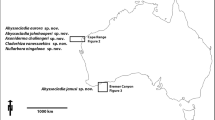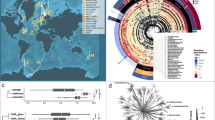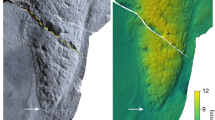Abstract
Some deep-sea poecilosclerid sponges (Porifera) have developed a carnivorous feeding habit that is very surprising in sponges^1^. As shown by the typical morphology of their spicules, they most probably evolved from "normal sponges" under the difficult conditions of a deep-sea environment. Such evolution, which implies the loss of the diagnostic character of the phylum Porifera, i.e. a filter feeding habit through a complex aquiferous system, should be of great interest in the understanding of the origin of metazoans. Some scenarios, based on the hypothesis of the paraphyly of Porifera, allege that metazoans could derive from a sponge filter-feeding body plan. A difficulty, however, is to imagine the transition from a sponge grade of organization to other organization plans^2^. Carnivorous sponges demonstrate that a functional, non filter-feeding animal may derive from a conventional sponge body plan, albeit nothing is known of the age of this evolution. Here we report that newly discovered species of Chondrocladia from the deep Pacific display special spicules that were previously recorded only as isolated spicules from sediment dating back to the Early Jurassic and Miocene periods. This suggests that the evolution of carnivorous sponges from filter-feeding poecilosclerid demosponges could date back at least from the Early Mesozoic.
Similar content being viewed by others
Article PDF
Author information
Authors and Affiliations
Rights and permissions
About this article
Cite this article
Vacelet, J., Kelly, M. New species from the deep Pacific suggest that carnivorous sponges date back to the Early Jurassic. Nat Prec (2008). https://doi.org/10.1038/npre.2008.2327.1
Received:
Accepted:
Published:
DOI: https://doi.org/10.1038/npre.2008.2327.1



